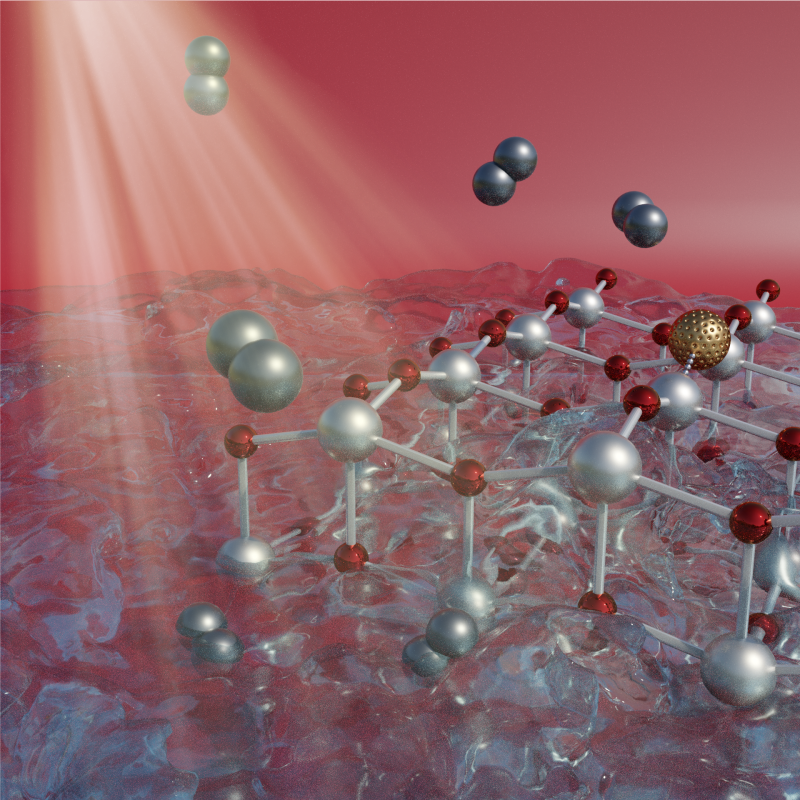Czech Universities Join Forces with European Leaders in Green Energy
Improving research focused on harnessing sustainable and green energy, sharing knowledge with top foreign experts, and further increasing the success rate in large international grant competitions—these are the goals of the grant project from the Twinning call of the Horizon Europe programme. The Twinning consortium will connect researchers from the Czech Advanced Technology and Research Institute (CATRIN) of Palacký University Olomouc and the Centre for Energy and Environmental Technologies (CEET) of VŠB-Technical University in Ostrava (VSB-TUO) with world-renowned research teams from Germany and Italy. The budget of the three-year project is about 1.5 million euros.
“In recent years, we have developed a number of unique nanomaterials that can convert solar energy into heat or produce hydrogen as an alternative source of green energy with high efficiency. Although our team has achieved a number of significant results, we still need to share some knowledge and experience that will help us bring selected technologies into practice,” said the Principal Investigator of the project, Štěpán Kment from CATRIN. Thanks to the project, Czech scientists will be able to work with experts from Italy and Germany that have vast experience with specific applications such as electrochemical removal of carbon dioxide or hydrogen extraction by solar splitting of water.

The scientific content of the project called “Single Atom Based Nanohybrid Photocatalyts for Green Fuels” is the study and development of nanomaterials whose efficiency in new energy and environmental technologies will be increased by anchoring single metal atoms to their surface. It is so-called engineering at the level of single atoms—a revolutionary scientific process that enables to control the chemical and electronic behaviour of single atoms and molecules and to use these properties for practical applications.
“Science today, but also society as such, faces a challenge no greater than putting an end to dependence on fossil fuels and investing in the development of clean, green, and sustainable energy sources. Photocatalytic splitting of water with the help of suitable semiconductor nanomaterials is a way of using solar energy to obtain hydrogen as a clean fuel. Increasing the yield of solar energy conversion with the help of engineering at the level of single atoms is the direction we want to take with our international team to bring the technology into a commercial application”, said Prof. Schmuki, a world-renowned expert from the University of Erlangen–Nuremberg (FAU), Germany, and holder of a prestigious ERC Advanced grant funded by the European Research Council.
The research team wants to move beyond the traditional perception of materials and aims to push back the frontiers of existing nanotechnologies. “We understand that if we anchor metal atoms in a controlled way into the structure of suitable nanomaterials, we can dramatically change the efficiency and course of some processes and technologies. We want to model these processes using the unique infrastructure at VSB-TUO, which has one of the most powerful supercomputers in Europe. At the same time, we plan to use sophisticated techniques in Trieste that use high-energy X-ray radiation for detailed description of properties of new materials,” said Radek Zbořil from VSB-TUO, who also works in CATRIN, Olomouc.
Beyond hydrogen generation, the research team will focus on another major societal and scientific challenge—reducing carbon dioxide emissions that contribute to global climate change. “Using suitable nanomaterials, carbon dioxide can be converted electrochemically into useful chemicals or energy sources such as formic acid, carbon monoxide, ethylene, ethanol, or methane. We have been working with colleagues in Olomouc for a long time and we want to use their graphene-based materials enriched with suitable metals to selectively reduce CO2 and increase the efficiency of these processes. I believe that these technologies have real commercial potential with a potential impact in energy and environmental applications”, added Prof. Fornasiero from the University of Trieste in Italy, a renowned expert in the field of electrocatalysis and author of several groundbreaking papers published in the journal Science.
In addition to specific scientific results, another objective of the project is cooperation and sharing of experience. This is why exchange stays, summer schools or joint workshops of not only scientists but also project managers will take place over the course of three years.
The TWINNING call (HORIZON-WIDERA-2021-ACCESS-03-01), which closed in January this year, awarded approximately 100 grants, which were shared among a total of 21 countries. Czech research teams and universities received nine projects.

